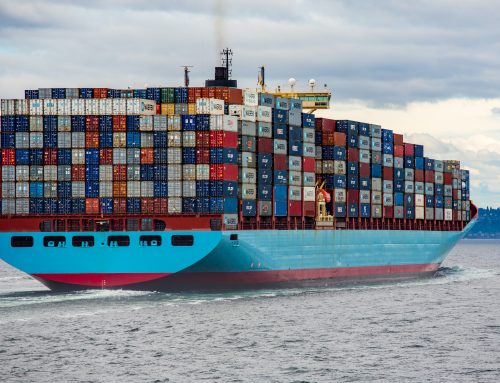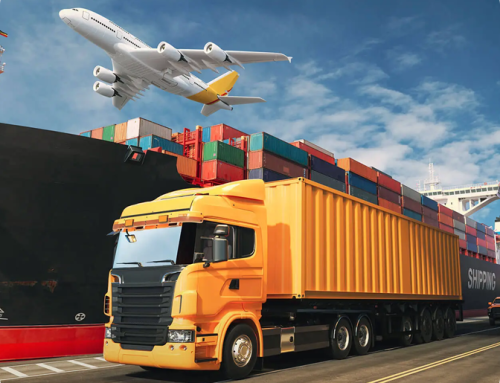We don’t think there’s anyone in this world who enjoys going through customs. Sure, the excitement of traveling can sometimes ease the pain, but most people would like to get it over with as quickly as possible. Unfortunately, going through customs simply takes as long as it takes and there’s no way to get around it. But if you’re prepared, you can avoid unnecessary delays and setbacks. We’ve made a quick guide to help you go through customs without a hitch.
How Long Does It Take To Get Through Customs?
This question gets asked a lot, but there isn’t one simple answer. It depends on several different factors. A big one is how you’re crossing the border.
If you’re driving, it depends on which port of entry you’re going through customs at. Thankfully, the CBP (Customs Border Protection) actually has a system to monitor each port. It’s called CBP Border Wait Times. Visit the website, select your method of transport and the port you’re going to and find out how long the wait time is in real time. It’s pretty useful and many people don’t know about it, but this tool can definitely help you to plan your next border crossing.
If you’re flying, there’s a similar system called the CBP Airport Wait Times. This one is a little bit different as it uses historical data to estimate future wait times. This means you can select the date and time you’ll be traveling to get a rough idea of how long you’ll be waiting in customs. If you plan strategically, it could result in getting through customs faster.
Both of these tools are pretty handy. Unfortunately, they can’t always predict human mistakes. The biggest delays at customs are often caused by people who simply don’t know the rules. To avoid being the person who holds things up for themselves and everyone else, read on.
Know What You Can and Can’t Take With You
We get that it might be hard to part with some fresh flowers or fancy fruit you bought in a foreign country, but many items like these are prohibited. You’ll save yourself a lot of time and money if you know what will and what won’t be taken away from you when going through customs.
If you’re coming from another country, you can be pretty sure that most things you buy in duty-free will be no problem. The keyword there is most, so always double check, just to be sure. There are also many things for sale elsewhere in the airport or near a land border that could cause problems. Seemingly harmless carrot sticks or an apple you bought for a travel snack could cause a bit of a problem when going through customs at the U.S. border.
These things depend a lot on where you’re coming from. If you’re unsure of what you can and cannot bring through U.S. customs, consult this list of restricted items on the U.S. Customs and Border Protection Website.
Filling Out A Customs Declaration Form
If you’re coming by plane, a flight attendant will give you a CBP Declaration Form. You’ll need to mark down all purchased items that you’re bringing in. Make a note of what’s in your bag when you’re packing so you can be prepared to fill out the form. Don’t wait to do this until you land, as you’ll be scrambling for a place to stop and write while everyone else is headed towards the customs line. Sometimes, getting through customs faster really just means being ahead of the pack!
There are other ways of getting through customs faster. One is called the Automated Passport Control (APC) program. With the APC program, you can respond to CBP questions and fill out a customs form at an automated self-serve kiosk. Once you’re done, you simply hand the printed receipt to a CBP officer. If everything is filled in correctly, you’ll get through in no time. However, this program is only available to U.S., Canadian and eligible Visa Waiver Program international travelers. You can find more information about the Automated Passport Control on the CBP website.
Another option when flying is the Global Entry program. For this, you must be a pre-approved Global Entry Member. You can find more information about eligibility and the application process on the CBP website. You’ll receive a Global Entry card, but you’ll still need to travel with your passport. If you’re a member, you can have your passport and fingerprint read at a Global Entry kiosk, fill out a Global Entry customs form, and proceed directly to baggage.
If you drive over the border often, you can apply for the NEXUS program. This can also be used in some airports, but it’s really the only way of getting through customs faster when crossing land borders. If you have a NEXUS card, you get to use expedited lanes and processing. You’ll still need to declare your purchases and whatever you’re carrying like everyone else, though!
Do’s And Don’ts
The best tip we have for getting through customs faster is to follow all laws and traveling guidelines. Here are some common mistakes travellers make that you can avoid on your next trip to get through without delays.
- Going way over your duty-free limit – check all the regulations regarding limits and timespans.
- Frequent crossing – doing so very often can raise flags. If you plan to be a frequent
crosser, apply for a NEXUS card or Global Entry Membership status. - Farm visits – Livestock diseases are a serious threat. If you’re visiting an out-of-country farm, be honest and patient when returning at the border.
- Fruit, vegetables, and fresh foods: Sniffer dogs may smell residue in your bag even if it’s empty. Clean out your bags before your trip to avoid a possible delay.
- Being rude or anxious: Agents are used to some unease, but unusual behaviour such as aggression, agitation, or uncooperative attitudes can prompt a secondary inspection.
- Vague answers: giving nonspecific or unclear responses to the questions they ask while going through customs is likely to elicit a second round of questioning.
- Failure to declare food: even things like chocolate bars, snack foods, or spices count as food. Even if you know the food you have will be cleared, you must declare it anyway. If the CBP happens to find some undeclared crackers or candy in your luggage, you’ll waste time, have your Global Entry status removed (if you have it) and potentially face a fine.
- A criminal record: Secondary inspections are guaranteed for criminal records. Without a U.S. Entry Waiver, the chance of being refused entry is high. If that’s your case, contact a reputable pardons lawyer before planning any trips or vacations across the border.
We hope our quick guide on how to go through customs without delay was helpful. Getting yourself through customs quickly is one thing, but how about your packages? At Clearit, we specialize in customs brokerage and shipping, so we’re experts at making sure your items ship to wherever you need, whenever you need. If you have any other questions about customs or other import and export inquiries, don’t hesitate to get in touch with us today!



